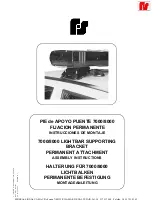
Particularly avoid fire, naked flames, creating
sparks and smoking. Ensure there is sufficient
ventilation while charging and jump-starting.
Do not lean over a battery.
G
WARNING
Battery acid is caustic. There is a risk of injury.
Avoid contact with the skin, eyes or clothing.
Do not breathe in any battery gases. Do not
lean over the battery. Keep the batteries out
of the reach of children. Immediately rinse off
battery acid thoroughly with plenty of clean
water and seek medical attention at once.
G
WARNING
A discharged battery can freeze at tempera-
tures below freezing point. When jump-start-
ing the vehicle or charging the battery, gases
can escape from the battery. There is a risk of
an explosion.
Allow the frozen battery to thaw out before
charging it or jump-starting.
!
Vehicles with a petrol engine: avoid
repeated and lengthy starting attempts. Oth-
erwise, the non-combusted fuel may damage
the catalytic converter.
If the indicator and warning lamps in the instru-
ment cluster do not light up at low tempera-
tures, the discharged battery may have frozen.
In this case you may neither charge the battery
nor jump-start the vehicle. The service life of a
thawed battery may be shorter. Start-up behav-
iour may deteriorate, particularly at low temper-
atures. Have the thawed battery checked at a
qualified specialist workshop.
Do not use a rapid charging device to start the
vehicle. If your vehicle's battery is discharged,
the engine can be jump-started from another
vehicle or from a donor battery using jump
leads. For this purpose, the vehicle has a jump-
starting connection point in the engine com-
partment.
When jump-starting, observe the following
points:
R
The battery is not accessible in all vehicles. If
the other vehicle's battery is not accessible,
jump-start the vehicle using a donor battery
or a jump-starting device.
R
You may only jump-start the vehicle when the
engine and exhaust system are cold.
R
Do not start the engine if the battery is frozen.
Let the battery thaw first.
R
Jump-starting may only be performed from
batteries with a nominal voltage of 12 V.
R
Only use jump leads that have a sufficient
cross-section and insulated terminal clamps.
R
If the battery is fully discharged, attach the
battery of another vehicle for a few minutes
before attempting to start. This charges the
empty battery a little.
R
Make sure that the two vehicles do not touch.
Make sure that:
R
The jump leads are not damaged.
R
Bare parts of the terminal clamps do not come
into contact with other metal parts while the
jump leads are connected to the battery.
R
The jump leads cannot come into contact with
parts such as the V-belt pulley or the fan.
These parts move when the engine is started
and while it is running.
Jump leads and further information regarding
jump-starting can be obtained from any quali-
fied specialist workshop.
Before reconnecting the jump leads
X
Apply the parking brake.
X
Vehicles with automatic transmission:
shift the transmission to position
P.
X
Vehicles with manual transmission:
engage neutral.
X
Switch off all electrical consumers, e.g. audio
equipment, blower.
X
Turn the key to position
0 in the ignition lock
and remove it.
X
Open the bonnet (
Y
page 337).
Jump-starting
359
Breakdown assistance
Z
Summary of Contents for V 200 d
Page 1: ...V Class Operating Instructions Mercedes Benz V Class...
Page 400: ...398...
Page 401: ...399...
Page 402: ...400...
Page 404: ...Order no 6463 7351 02 Part no 447 584 17 03 Z102 Edition 03 17 4475841703Z1028 4475841703Z102...
















































